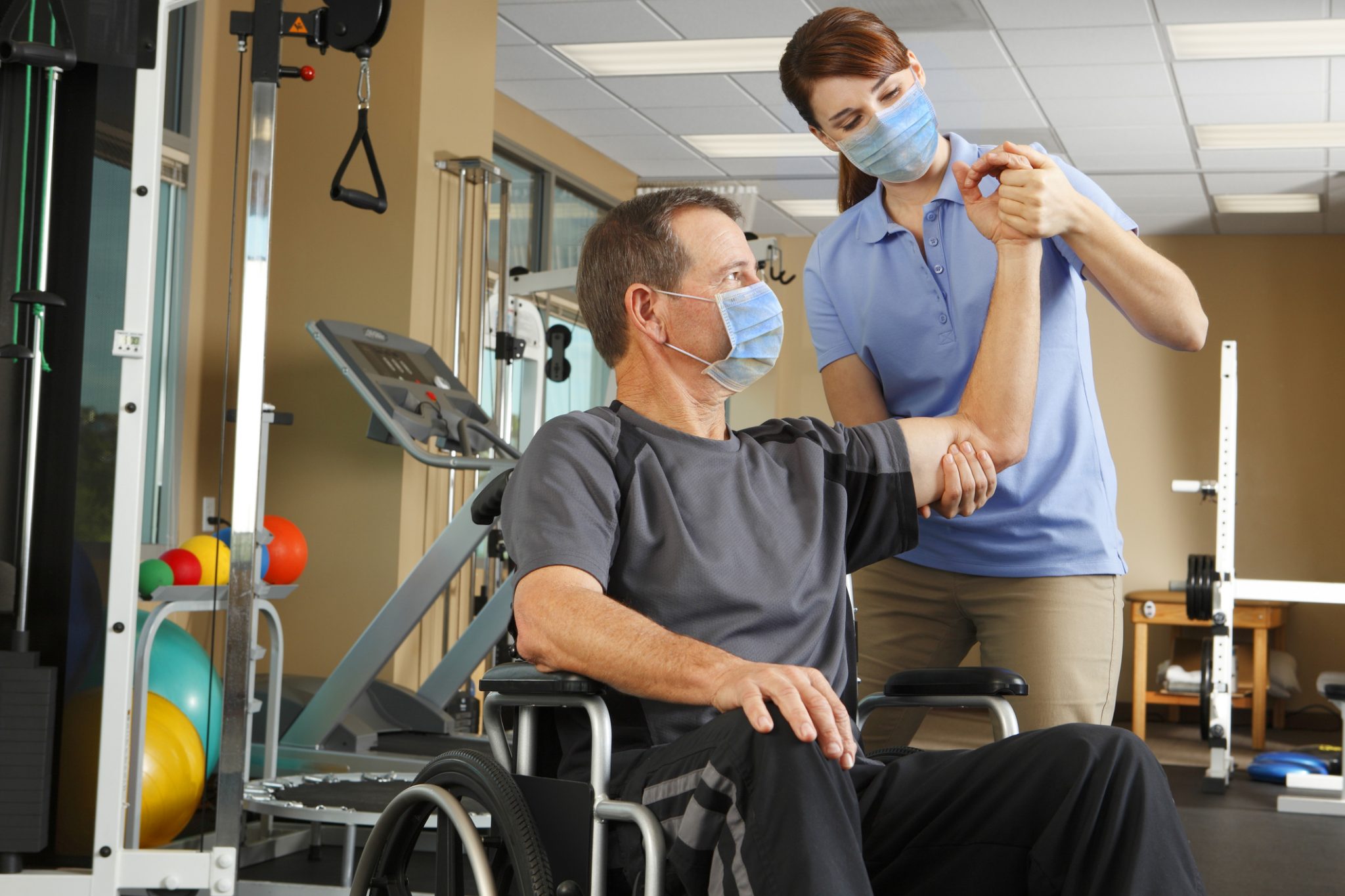Rehab in the Times of COVID-19

October 27, 2021
The COVID-19 pandemic has changed certain aspects of health care, and rehab is no different.
Christine Greiss, D.O., director of the Concussion Program at JFK Johnson Rehabilitation Institute, says that, during the height of COVID-19 when visitor restrictions to our inpatient Rehabilitation Institute were in place, it was a challenge to inform family about a patient’s situation when the patient is released home—something that used to be done routinely within JFK Johnson Rehabilitation Institute, suddenly had to be done virtually.
“We need to know what we’re getting patients back to, and not having the family there to give us that feedback made things harder,” she says. “One way we’ve addressed this is doing family trainings virtually.” As visitor restrictions are lightened, discharge information is increasingly shared in-person again.
If you or a loved one attends outpatient rehabilitation for a physical or occupational issue, David P. Brown, D.O., medical director of electrodiagnostics and sports medicine in the Department of Physical Medicine and Rehabilitation at JFK Johnson, states that one of the most important things you can do to ensure the treatment progresses is to encourage people to continue on with the activity they’re getting back to. “We know every day is a challenge, but it’s important that patients keep doing their daily activities as much as they can and, if possible, push themselves to do a little more each day,” says Dr. Brown, who is board certified in rehabilitation medicine.
Dr. Brown says good activities to focus on include: gardening, cooking, cleaning and household chores. Not only are these daily activities that patients should be striving to accomplish, but they also aid in the rehabilitation process.
Heikki Uustal, M.D., medical director of the Prosthetic/Orthotic Team at JFK Johnson, has advice for patients that use braces or other devices as part of their rehab. “[Particularly during the pandemic] it comes down to two parts,” Dr. Uustal says. “One is the traditional things we ask patients to do: exercising properly, stretching, learning about the brace or device—for example, how to clean it—simple things like that. The other part is doing it safely.”
Dr. Uustal explains that if a person with an artificial leg or a brace is having a problem, they may not think of it as important enough to come in—but that is the wrong attitude. Patients shouldn’t neglect their own care, and if they feel they need to come in, they can do it safely, since JFK Johnson Rehabilitation Institute is taking every precaution to keep all patients protected. His advice is simple: If you need to come in, take advantage of the free masks and multiple other provisions provided at the hospital, and wash your hands frequently.
The material provided through HealthU is intended to be used as general information only and should not replace the advice of your physician. Always consult your physician for individual care.
Find a doctor near me
What Is Frozen Shoulder, and Can You Prevent It?

Pain that makes you hesitate to use your shoulder may be a sign of a condition known as frozen shoulder.
Protect Yourself From Golfers’ Wrist

Prevent golfer's wrist pain. Learn how to manage and avoid this common golf injury with expert advice from orthopedic surgeons. Find relief today.
